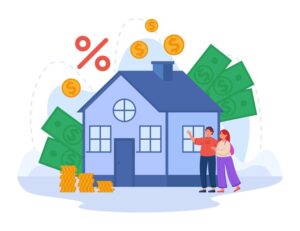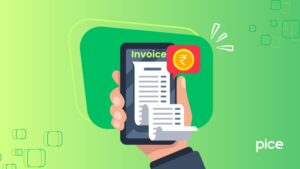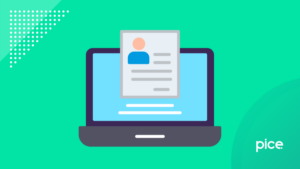Supply to SEZ in India Under GST
- 16 Dec 24
- 10 mins

Supply to SEZ in India Under GST
- Definition of SEZ Under GST
- Definition of Domestic Tariff Area (DTA)
- What Is Supply to SEZ?
- Understanding Supply to SEZ Unit from a Regular Taxpayer
- Understanding Supply from SEZ Unit to a Regular Taxpayer
- Understanding Supply to SEZ with Payment of IGST
- Understanding Supply to SEZ Without Payment of IGST
- Conclusion
Key Takeaways
- Supplies to SEZ units are considered zero-rated and can be made with or without IGST payment under GST rules.
- Suppliers can provide goods/services to SEZ with IGST payment and claim a refund or without IGST payment by submitting a Letter of Undertaking (LUT) or bond.
- Sales from SEZ to regular taxpayers with a bill of entry are treated as imports, while without a bill of entry, they are considered normal sales.
- Suppliers must report SEZ supplies in specific tables of GSTR-1 or Annexure forms, ensuring proper compliance and tax treatment.
- Using a LUT for zero-rated supplies is generally preferred over a bond as it avoids the mandatory bank guarantee unless a breach occurs.
Reporting supply to SEZ in GSTR-1 via the unified portal can be of various types. It may involve a bill of entry or not, and it can also include situations with or without duty payment. Additionally, supplies can be reported with or without Integrated Goods and Services Tax payment as inter-state supply of goods and services attract IGST. Learn about each type in detail here to make informed decisions.
Definition of SEZ Under GST
Under Section 2(19) of the IGST Act, the Special Economic Zone (SEZ) is defined in Clause (za) of Section 2 of the Special Economic Zone Act, 2005. According to this clause, a Special Economic Zone (SEZ) refers to each zone that has been notified under the provisions of sub-section (4) of section 4 (including Free Trade and Warehousing Zone).
A Special Economic Zone is a designated area where businesses benefit from simplified tax structures and less complex legal requirements. Although SEZs are situated within a country’s borders, they are considered foreign territories for tax purposes.
Definition of Domestic Tariff Area (DTA)

The Section 2(i) of the SEZ Act defines DTA as the whole of India excluding Special Economic Zones.
What Is Supply to SEZ?
Supply of goods and services to SEZs are considered zero-rated supplies. The Section 16(1) of the IGST Act, 2017 considers the following as zero-rated supplies:
- Export supply of goods and services
- Supply of services received and supply of goods by a SEZ unit or SEZ developer
Under Section 16(2) of the IGST Act in GST rules, suppliers can claim input tax credit on zero-rated supplies. The two ways to supply goods and services to SEZ are the following:
- Supply of service made to SEZ or supply of goods to SEZ without paying IGST
- Supply of goods and services to SEZ by paying IGST
💡 If you want to pay your GST with Credit Card, then download Pice Business Payment App. Pice is the one stop app for all paying all your business expenses.
Understanding Supply to SEZ Unit from a Regular Taxpayer
Supply of goods and services to SEZ units can be by paying duties of customs or by not paying a custom duty as follows:
- Supply to SEZ with Payment of Duty
Usually, SEZ developers and units do not have GST liabilities. However, in certain circumstances, they might need to pay GST on original invoices, in respect of supply, issued by a regular taxpayer for the relevant period. The GST rate varies based on the case.
If the GST amount is collected from SEZ units/developers, they can claim a refund of the amount from GSTN for the relevant tax period using refund vouchers. To explain simply, regular taxpayers pay GST and claim a GST refund rather than SEZ units/developers paying GST. However, the rule pertaining to issuance of E-way bill remains applicable if there is a transportation of goods amounting to ₹50,000 or more.
In new GST returns with respect to transactions, the GSTN auto-populates the refund form, wherein an additional field 'Whether Supplier Wants Claim Refund' has been added. Based on the response of the regular taxpayer, the taxable invoice of the current tax period auto-populates Table 3E of Annexure-1 or Table 3A of Annexure-2 of the recipient or SEZ taxpayer.
- Supply to SEZ Without Payment of Duty
If a supplier does not collect tax, the concerned goods and services are referred to as SEZ without payment of customs duty. In such a case, the regular taxpayer can furnish the amount in Table 3F of Annexure-1 which will auto-populate in Table 3A of Annexure-2 of SEZ.
Understanding Supply from SEZ Unit to a Regular Taxpayer
Sales by SEZ and sales (outward supplies) to SEZ differ from each other. When an SEZ sells goods and services with or without the cover of the bill of entry, it can be subject to a reverse charge mechanism (RCM) or can be considered reverse charge supplies, similar to other purchases. Here is how each type is treated:
- Sale from SEZ with Bill of Entry
If a SEZ supplies goods with a bill of entry, the SEZ will not bear any liability for payment. However, the transaction will be treated as an import from SEZ for a regular taxpayer or buyer.
- Sale from SEZ Without Bill of Entry
If a SEZ supplies goods without a bill of entry, these transactions will be treated as normal sales or purchases.
The table below illustrates how the treatment of sales made to a regular taxpayer by a SEZ in new forms:
| Type of Transaction | Treatment by SEZ | Treatment by a Regular Taxpayer |
| With Bill of Entry and with RCM | Table 3D.4 of RET-1 | Table 3K of ANX-1 |
| With Bill of Entry and without RCM | Table 3D.4 of RET-1 | Table 3K of ANX-1 |
| Without a Bill of Entry and with RCM | Table 3D.3 of RET-1 | Table 3H of ANX-1 |
| Without a Bill of Entry and without RCM | Table 3B of ANX-1 | Auto-populated in Table 3A of ANX- |
Understanding Supply to SEZ with Payment of IGST
Suppliers can provide goods and services with the payment of tax (IGST). In such a case, the details of invoice with payment should mention ‘Supply Meant for SEZ Unit/SEZ Developer with Payment of Integrated Tax’. Under Section 16(3) of the IGST Act, suppliers who are unable to execute a Letter of Undertaking (LUT) for any reason have the option to charge IGST on their supplies.
As a result, suppliers can claim a refund of IGST. However, if a supplier is unable to claim a GST refund, he/she can request the SEZ unit to claim the refund of the IGST charge.
Understanding Supply to SEZ Without Payment of IGST
Supply to SEZ can be undertaken without IGST payment. However, it needs to be carried out under a Letter of Undertaking (LUT) or bond as follows:
Supply Under LUT
The following registered taxpayer or registered person is eligible to submit a Letter of Undertaking (LUT) in place of bond:
- A status holder mentioned in paragraph 5 of the Foreign Trade Policy 2015-2020
- Taxpayers receiving the due foreign inward remittances accounting for a minimum of 10% of the export turnover (aggregate turnover), not less than ₹1 crore in the previous financial year. Further, it should not have been prosecuted for offences under the CGST Act, 2017 (Central Goods and Services Tax Act) or any other existing laws wherein there has been a tax evasion exceeding ₹250 lakh.
A LUT has a validity period of 12 months and is accepted by the Assistant Commissioner or Deputy Commissioner. In case there is a breach of the LUT, the supplier will need a bank guarantee. The supplier can optimise ITC against other domestic supplies. Additionally, the invoice for the current period should specify ‘Supply Meant for SEZ/ SEZ Developer Under LUT Without Payment of Integrated Tax’.
You need to furnish LUT in Form GST RFD 11. However, you must note that online filing of LUT has been restricted since February 2018.
Supply Under GST Bond
Here are the factors associated with supply to SEZ without IGST payment under bond:
- The supplier using the bond can utilise the input tax credit against other domestic supplies.
- You need an indemnity bond in the format GST RFD-11 on a non-judicial stamp paper.
- While executing the bond, the supplier needs a bank guarantee in the form of security.
- The amount of bank guarantee should not be more than 15% of the bond amount.
- An Assistant Commissioner or a Deputy Commissioner will accept the bond.
- The invoice details should mention ‘Supply Meant for SEZ/SEZ Developer Under Bond Without Payment of Integrated Tax’.
Conclusion
Reporting supply to SEZ in GSTR-1 differs from reporting of supplies to other entities, excluding unregistered persons. For taxable supplies to SEZs made without IGST payment, using a Letter of Undertaking (LUT) is generally more convenient than using a bond. While a bond requires a bank guarantee as a mandatory requirement, an LUT only requires a bank guarantee in the event of a breach. Therefore, as a supplier, it is advisable to opt for a LUT instead of a bond for easier legal compliance. However, if the tax amount differs, ensure to mention the debit or credit note number on the invoice for compliance.
FAQs
Is supply from SEZ to SEZ under GST?
What is table 14 and 15 in GSTR-1?
Table 15: Deals with amendments to previously reported export and SEZ supply details, including any corrections to invoices or tax adjustments.
What is 9B in GSTR-1?
What is table 7 in GSTR-1?
How to show SEZ supplies in GSTR-1?
With payment of IGST (where the tax is charged and claimed as a refund).
Without payment of IGST (under LUT or bond), where the invoice mentions “Supply to SEZ without payment of Integrated Tax.”
What is GSTR-7 and 7A?
GSTR-7A: A TDS certificate generated automatically after the taxpayer files GSTR-7. It serves as proof of the TDS deducted and deposited.
 By
By 

















